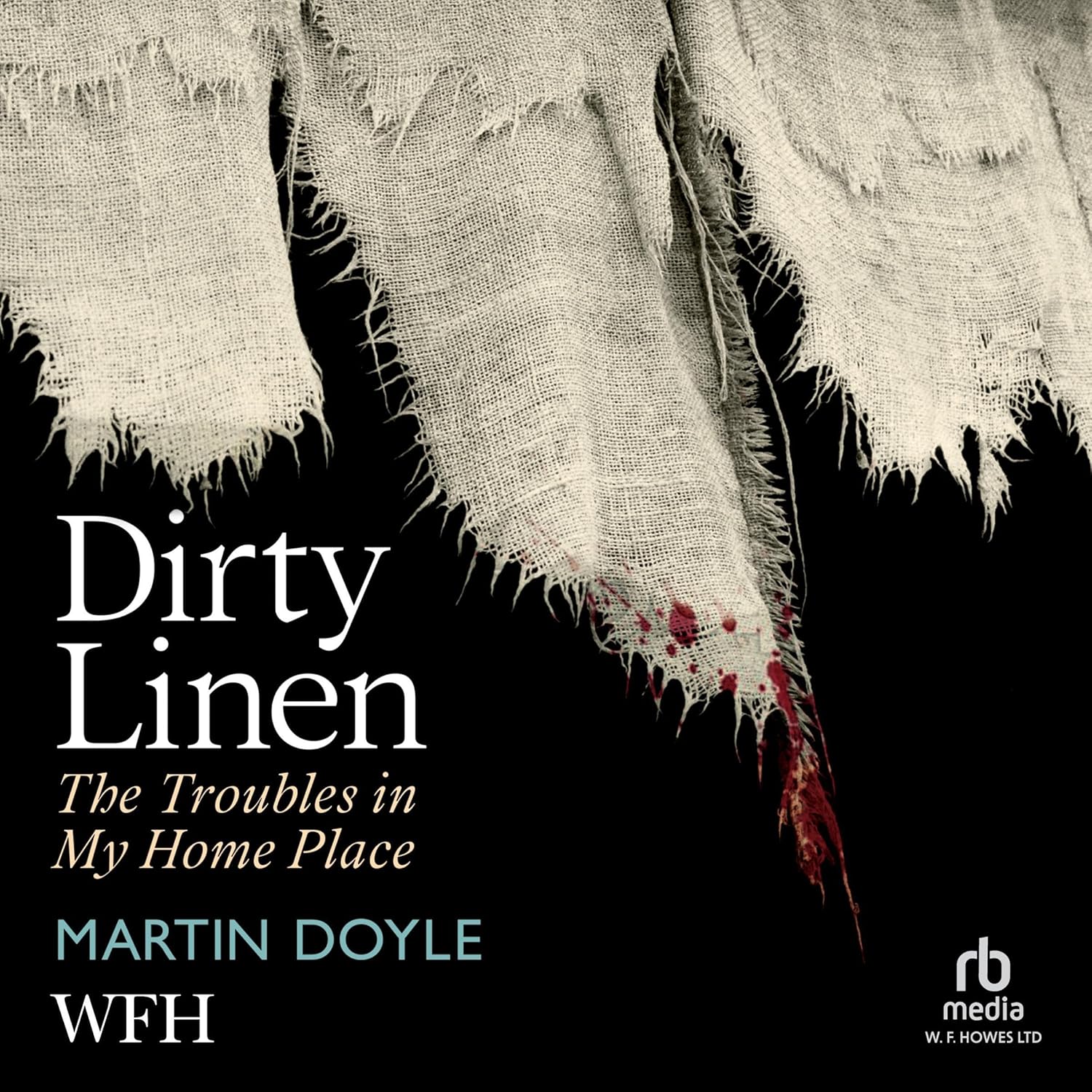I have met numerous people who romanticized and glorified the violence that occurred during the Northern Irish Troubles that claimed more than 3,600 lives. Martin Doyle’s “Dirty Linen: The Troubles in My Home Place” should be required reading for those people. Doyle’s book is a powerful condemnation of sectarian violence. Though Doyle writes clear, lucid prose, his book, nevertheless, is not an easy read. I was so affected by its catharsis that several times I had to put it down and walk away. It hit home on a very personal level. I even know the father of two of the victims.
“Dirty Linen” is an intimate account of how the violence in the Troubles affected his parish of Tullyish, Co. Down about 25 miles north of the border with the Republic. It is a gut-wrenching account of how violence mars the lives of ordinary people. It is a hard, but important read. Many books about the Troubles describe what happened. Some even explain why, but “Dirty Linen” is one of those very rare books that accurately portrays the trauma and heartbreak the victims endured.
This is not a book about ideology. It is a book about people, and the strength of the book lies in Doyle’s ability to convey the horrors that people on both sides of the community suffered through when their loved ones were murdered. Doyle is a local and perhaps this enables him to get the victims to reveal their experiences and share their traumas. One of the great strengths of the book is the compassion that Doyle feels for his victims and he is remarkably even handed. He describes the grief of both Catholic and Protestant families with balance and fairness.
Why is the book entitled Dirty Linen? Doyle grew up in an area that once belonged to the “linen triangle”, an area that produced fine linen for export around the globe, creating enormous wealth for mill owners and good jobs for the area’s residents. The linen industry faded and by the late 20th century, the linen triangle had been replaced by the name the “murder triangle.” The triangle was an area where republican gunmen and bombers killed soldiers, policemen and uninvolved Protestants, but also where loyalists killed Catholics. Doyle captures the terrible intimacy of this hatred and violence; killers often worked beside their victims and even walked to the places where they killed their victims. Linen, of course, is often used for burial shrouds, a grim metaphor that clues the reader into the subject of Doyle’s book.
Though “Dirty Linen” focuses on ordinary people, it also describes the deep historic roots of the area’s sectarianism, which began with the Ulster Plantation of Protestant settlers in the 17th century. Doyle develops the historical context of the violence and discusses the area’s history with an admirable even-handed impartiality, detailing the conflicts that shaped the “Linen Triangle” over the centuries as a prelude to his own coming of age there in the 1960s and ‘70s. A master chronicler, Doyle weaves the area’s history into his own family history so that the historical narrative has an intimate and personal feel.
One deeply troubling aspect of the book is that some of the victims’ doorsteps or in their own homes, violating the sense of sanctuary that every home should offer. Doyle explains that it is “desecration of what should be a safe space” Each family tried to cope in its own way. One family abandoned the family farm and headed south, the empty farm standing as a grim testament to the violence that marred the area. Even the dead emigrated. The two O’Dowd brothers were exhumed and reburied next to their mother in County Meath. What emerges is an image of a haunted landscape, scarred by the two dozen or so murders that occurred in Doyle’s home place.
Another deeply troubling aspect of the book is the clear picture of collusion that emerges between the RUC, the British Army and Loyalist gunmen. Robin Jackson, known as the Jackal, is tied to many of the murders Doyle chronicles. Jackson was reputed to have been an “untouchable” British Army or RUC Special Branch agent. Doyle alleges that higher ups in the security service protected him when strong evidence linked Jackson to the 1971 murder of trade unionist Patrick Campbell, allowing his murder of Catholics and others to continue for decades.
“Dirty Linen” is a powerful story, told in detail with the profound sense of time and place that only a local like Doyle who grew up there during that awful time possesses.








